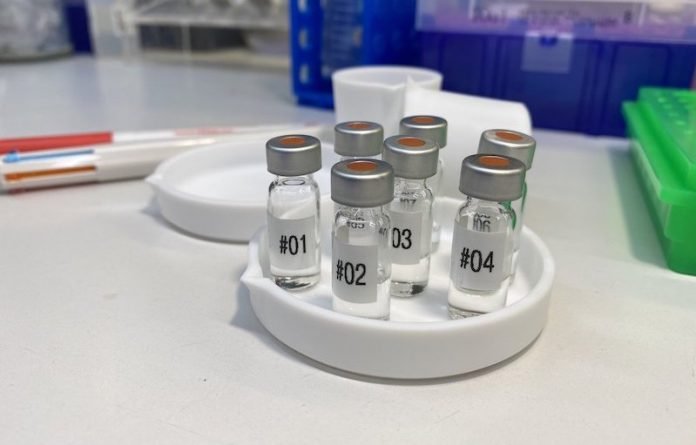
In a study from NYU College of Dentistry, scientists found a topical gel that blocks the receptor for a metabolic byproduct called succinate treats gum disease by suppressing inflammation and changing the makeup of bacteria in the mouth.
The research lays the groundwork for a non-invasive treatment for gum disease that people could apply to the gums at home to prevent or treat gum disease.
Gum disease (also known as periodontitis or periodontal disease) is one of the most prevalent inflammatory diseases, affecting nearly half of adults 30 and older.
It is marked by three components: inflammation, an imbalance of unhealthy and healthy bacteria in the mouth, and destruction of the bones and structures that support the teeth.
Uncontrolled gum disease can lead to painful and bleeding gums, difficulty chewing, and tooth loss.
Past research has linked increased succinate—a molecule produced during metabolism—to gum disease, with higher succinate levels associated with higher levels of inflammation.
The team discovered in 2017 that elevated levels of succinate activate the succinate receptor and stimulate bone loss.
These findings made the succinate receptor an appealing target for countering inflammation and bone loss—and potentially stopping gum disease in its tracks.
In the study, the team examined dental plaque samples from humans and blood samples from mice.
Using metabolomic analyses, they found higher succinate levels in people and mice with gum disease compared to those with healthy gums, confirming what previous studies have found.
They also saw that the succinate receptor was expressed in human and mouse gums.
The team also tested the connection between the succinate receptor and the components of gum disease.
To see if blocking the succinate receptor could ameliorate gum disease, the researchers developed a gel formulation of a small compound that targets the succinate receptor and prevents it from being activated.
In laboratory studies of human gum cells, the compound reduced inflammation and processes that lead to bone loss.
The researchers are continuing to study the gel in animal models to find the appropriate dosage and timing for application, as well as determine any toxicity.
Their long-term goal is to develop a gel and oral strip that can be used at home by people with or at risk for gum disease, as well as a stronger, slow-release formulation that dentists can apply to pockets that form in the gums during gum disease.
If you care about gum health, please read studies about new causes of tooth decay and gum diseases, and common heartburn drugs may benefit your tooth and gum health.
For more information about gum health, please see recent studies about mouthwash that may increase your tooth damage, and results showing this common gum disease may double your risk of high blood pressure.
The study was conducted by Yuqi Guo et al and published in Cell Reports.
Copyright © 2022 Knowridge Science Report. All rights reserved.



